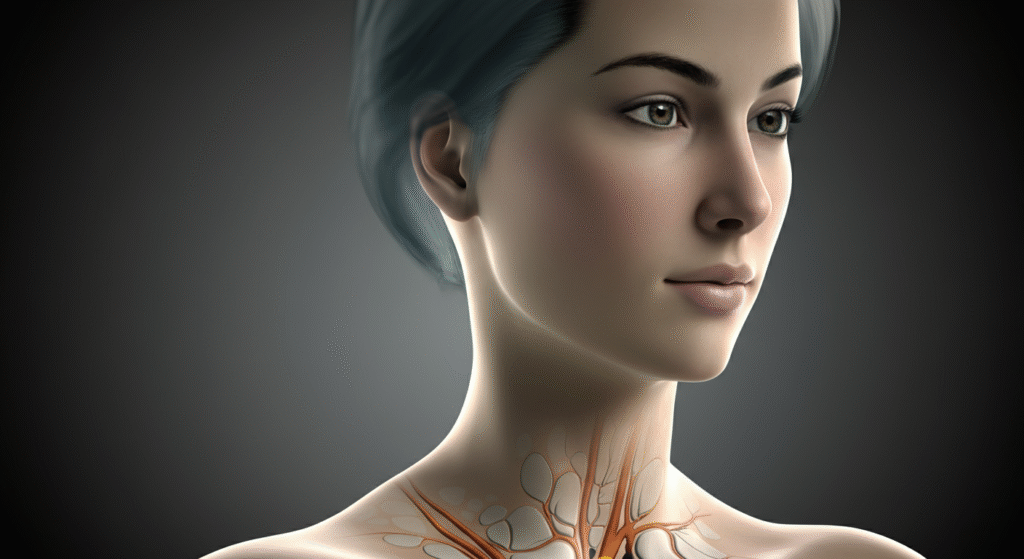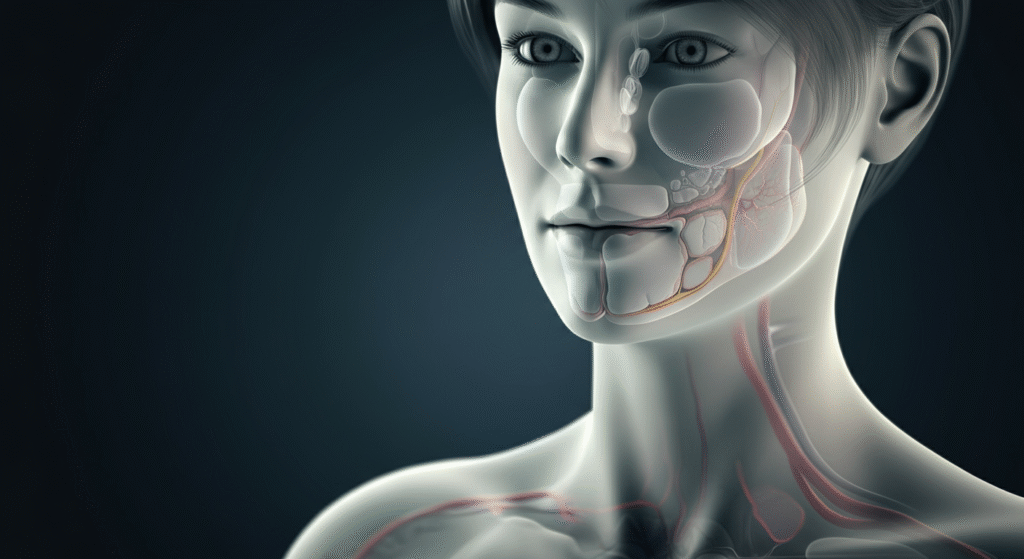Amazing Facts About the Skin and Its Daily Functions

The Superhero You Live In — Your Skin
Astonishingly your skin destroys between 30,000–40,000 skin cells each minute. During a 28-day cycle the skin completes whole structure renovation. Our entire body receives limited attention when it comes to noticing the skin that completely covers it. Each day this distinctive body system operates through an extensive set of life-saving functions that secure our defense from harmful bacteria and govern our body temperature maintenance.
The primary focus of most people is skin appearance even though its functions operate well past what meets the eyes. The education about extraordinary features of skin structure combined with its health functions helps you grasp its intricate nature and its vital role in whole body well-being. The following message helps you discover remarkable scientific occurrences found within your body’s largest organ.
Skin 101: Layers, Cells, and Structure
The skin isn’t a single layer; it’s a sophisticated, multi-tiered system, each level with its own role. Picture it like a sandwich made up of three key layers:
1. The Epidermis (The Outer Shield)
Your body protects itself from start with an outermost layer. The epidermis consists of keratinocytes which create keratin to form your protective tough and waterproof skin surface. The epidermis contains both keratin-producing keratinocytes and UV-ray protecting melanocytes.
Your epidermis functions like body armor which guards you from environmental threats which include dirt along with bacteria and sun damage.
2. The Dermis (The Command Center)
You will find the dermis below the epidermis as the thicker layer which functions as the main supporter. All collagen and elastin live in the dermis layer to provide structure and elasticity. The skin’s dermis contains all the essential skin components such as sweat glands and sebaceous glands as well as blood vessels and nerve endings.
In a city-like manner the dermis functions as the main administrator which handles both temperature control and hydration in addition to detecting sensory signals. Your brain receives skin temperature information through your dermis because of its connecting ability.
3. The Hypodermis (The Cushion)
The innermost layer, the hypodermis, is made up of fat and connective tissue. It acts as a cushion, providing insulation and protecting your muscles and bones from trauma.
Together, these layers create a functional masterpiece that keeps you alive and thriving.
The Skin’s Daily Job Description
Your skin works hard without asking for thanks. Its list of responsibilities is impressive, to say the least:
1. Protection
Your skin is a superhero when it comes to defending your body from germs, UV rays, and harmful pollutants. The epidermis forms a waterproof shield, while the dermis houses immune cells like Langerhans cells that fight off invading pathogens.
2. Regulation of Temperature
Ever wondered why you sweat when it’s hot? That’s your skin acting as a built-in thermostat. Sweat glands release moisture to cool you down, while blood vessels dilate or constrict to regulate heat loss.
3. Sensory Detection
The skin’s sensory receptors can detect changes in pressure, pain, temperature, and texture. For example, the reason your fingertips are so sensitive is that they contain over 1,000 nerve endings per square inch!
4. Immune Defense
Skin isn’t just a physical barrier; it’s an immune warrior too. Specialized cells detect harmful microbes and trigger your immune system to act. Think of it as a security system that’s always on high alert.
5. Wound Healing
Cut yourself? Your skin goes into overdrive, deploying platelets to clot the area and fibroblasts to lay down new tissue. It’s the ultimate self-repair mechanism.
These functions happen seamlessly, with you barely noticing, yet they’re critical for survival.
Mind-Blowing Stats: Amazing Biological Functions
- Heaviest Organ: Skin accounts for about 16% of your body weight, weighing around 8–10 pounds in an adult.
- Cell Turnover: Every minute, your body sheds and replaces about 30,000–40,000 skin cells. Over a lifetime, you’ll shed close to 100 pounds of skin!
- Compact Universe: A square inch of skin contains about 19 million cells, 1,000 nerve endings, 20 blood vessels, and 650 sweat glands.
- Microbiome Power: Your skin is home to trillions of bacteria, forming an ecosystem that supports immunity and balances moisture.
It’s wild to think about all this complexity happening on the surface of your body every single day.
Skin Variability: No One Has the Same Skin
Despite its universal importance, everyone’s skin is unique. Here’s how it varies across different factors:

1. Body Parts
The skin on your eyelids is just 0.5 millimeters thick, making it the thinnest on your body. Meanwhile, the soles of your feet can be up to 1.5 millimeters thick, built tough to endure daily wear and tear.
2. Gender Differences
Men generally have thicker, oilier skin due to higher testosterone levels, while women may experience more frequent changes in skin elasticity and moisture tied to hormonal fluctuations.
3. Ethnic Diversity
Skin tone and texture vary significantly across ethnicities. Melanin-rich skin offers greater natural UV protection but may be more prone to hyperpigmentation. Meanwhile, lighter skin types are more vulnerable to sunburn and skin cancer but often show fewer visible scars.
These differences highlight how versatile and adaptable our skin truly is.
Lifestyle + Skin = Daily Impact
1. Hydration
Dehydration can make your skin look dull and flaky. Drinking enough water helps maintain elasticity and supports cell function.
2. Sleep
Your skin follows a circadian rhythm, meaning it repairs itself at night while you sleep. Poor sleep can impair this cycle, leading to puffiness, dullness, and slower wound healing.
3. Stress
Chronic stress increases cortisol levels, triggering inflammation and possibly exacerbating conditions like acne, eczema, or psoriasis.
4. Pollution and Sun Exposure
UV rays can damage collagen, while pollutants create free radicals that accelerate aging. Sunscreen and antioxidant-rich products help neutralize these effects.
If you want healthy skin, a balanced lifestyle is non-negotiable.
How Skin Talks to the Brain and Body
Your skin is a major sensory organ wired directly to your nervous system.
- Goosebumps: These occur when tiny muscles at the base of your hair follicles contract in response to cold or emotional stimuli, like fear or nostalgia.
- Blushing: Triggered by adrenaline, blood vessels in the dermis dilate, turning your cheeks red. It’s your skin’s way of expressing emotions to the outside world.
- Immune Signals: When skin encounters harmful pathogens, it communicates with the immune system to launch an inflammatory response.
This connection between skin and the brain, known as the skin-brain axis, provides a fascinating glimpse into how deeply interconnected the body is.
Why You Should Never Underestimate Your Skin
Your skin is more than just a barrier. It’s a wise, multi-tasking organ that works hard to keep you healthy, comfortable, and radiant. From healing itself to protecting the delicate balance of your internal systems, its strength and adaptability are unparalleled.
Good skincare is about more than just vanity; it’s about supporting a vital organ so it can continue doing its job efficiently.
Conclusion: Respect the Organ You See Every Day
Take a moment to appreciate your skin for everything it does. Whether through hydration, sunscreen, or just better awareness, treating your skin with care means safeguarding your health. After all, this superhero deserves nothing less than the best support you can give it.
